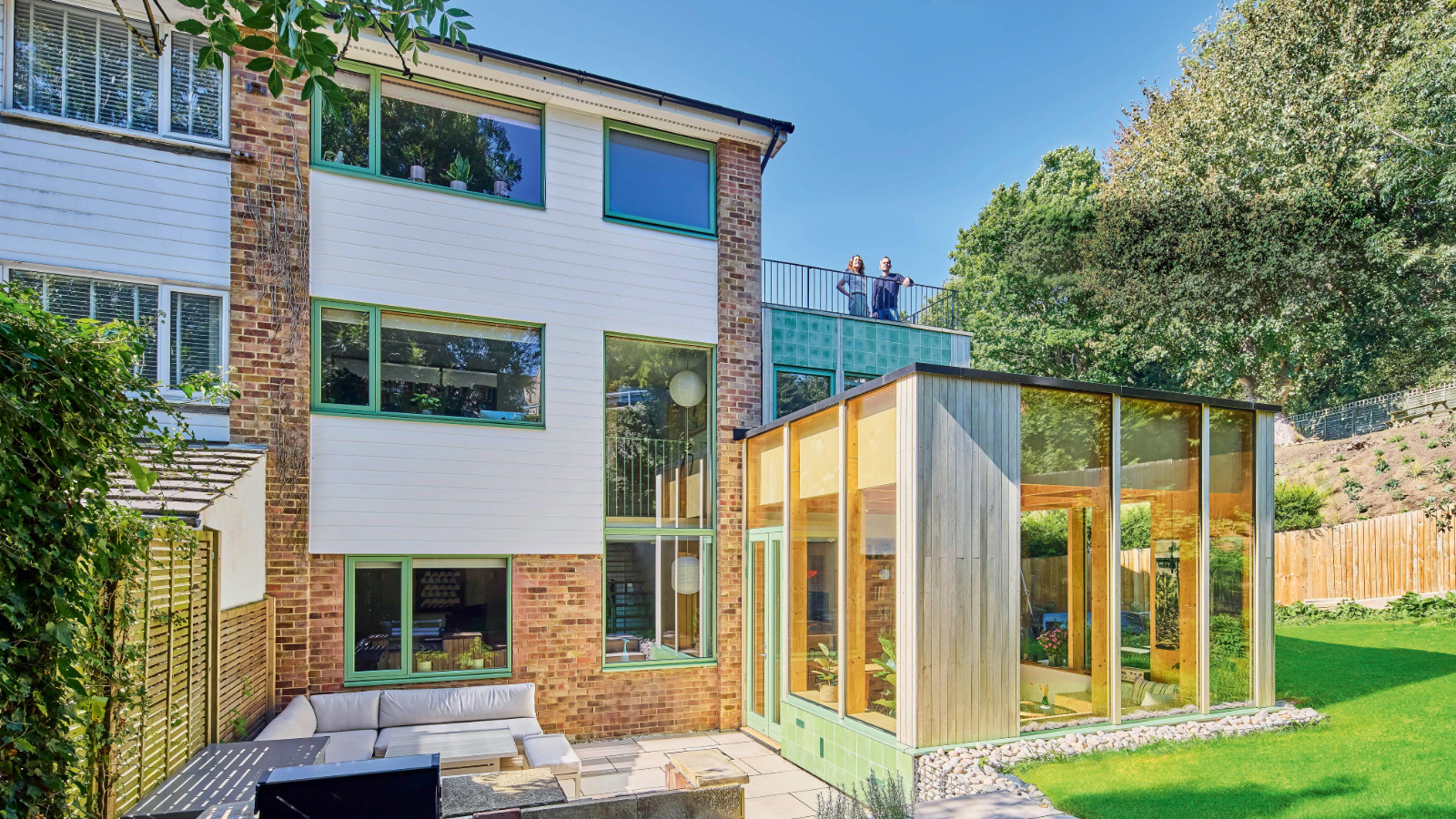Make your small wet room work harder with these clever, space-saving designs
The best small wet room ideas will ensure that you can have a luxurious showering experience – no matter how compact your bathroom might be
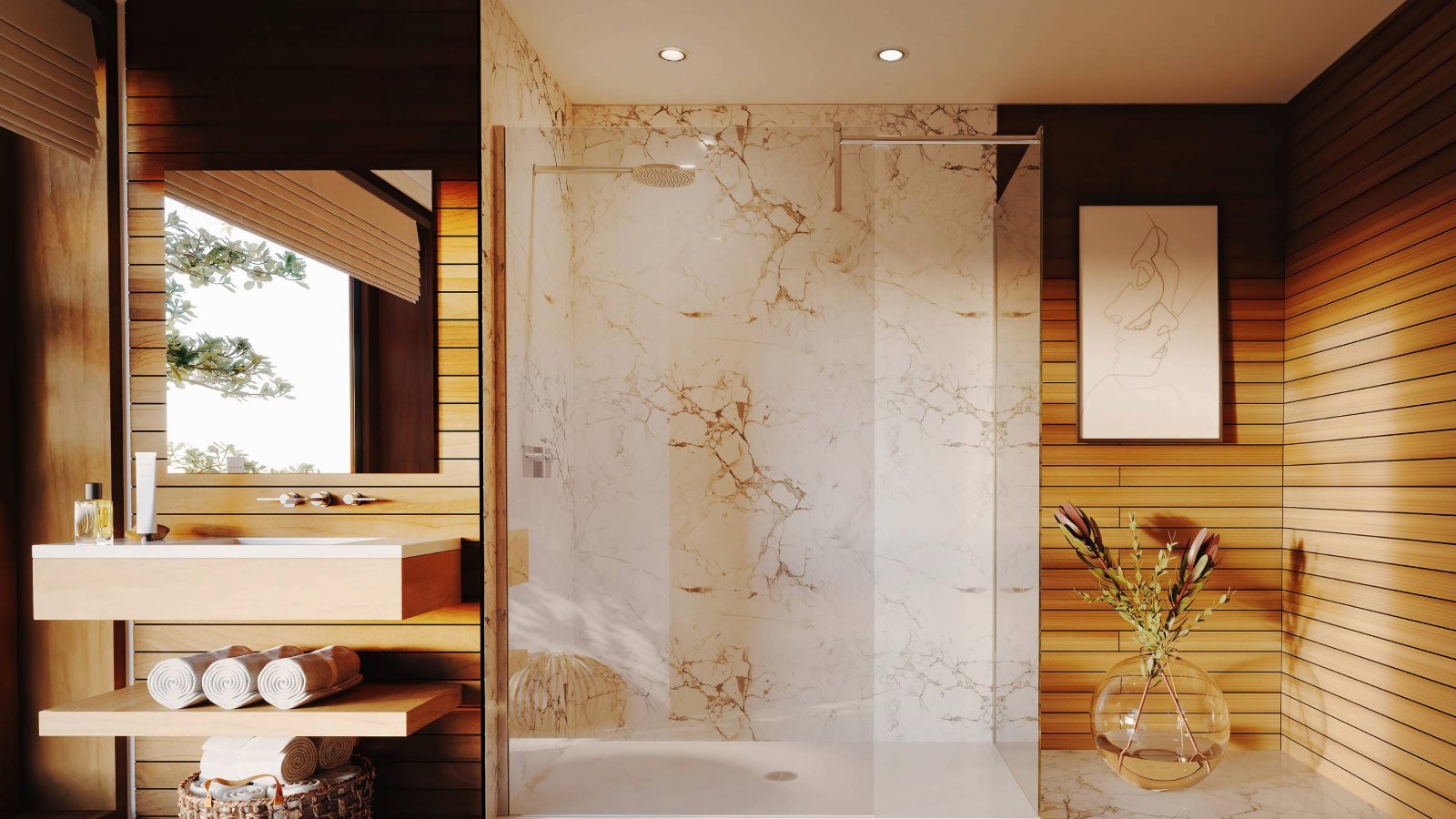
- 1. Shield the dry areas with a frameless screen
- 2. Create a curved cocoon in your small wet room
- 3. Locate your wet area in a corner
- 4. Use pattern in your small wet room to distract the eye
- 5. Contain shower spray with a single screen
- 6. Divide the space with a wall
- 7. Step the shower up in your small wet room
- 8. Create a sleek wet area instead of an entire room
- 9. Use partial room dividers to break up the space
- 10. Plan the layout of your small wet room carefully
- 11. Opt for a neutral plaster finish in your small wet room
- 12. Use skylights to bring in natural light
One reason that small wet room ideas are so popular is that they eliminate the need for extra bathroom fittings that can take up valuable space, such as a shower enclosure or bath.
Wet room ideas can work for any kind of bathroom, from en suites to family bathrooms, providing they are designed to take into account the needs of the users. They are also ideal for anyone searching for ways to make their home more accessible.
Our round-up of small wet room ideas brings together inspiration for anyone wondering how to make the best of a compact bathroom, from smart layout tips to space-enhancing tricks.
1. Shield the dry areas with a frameless screen
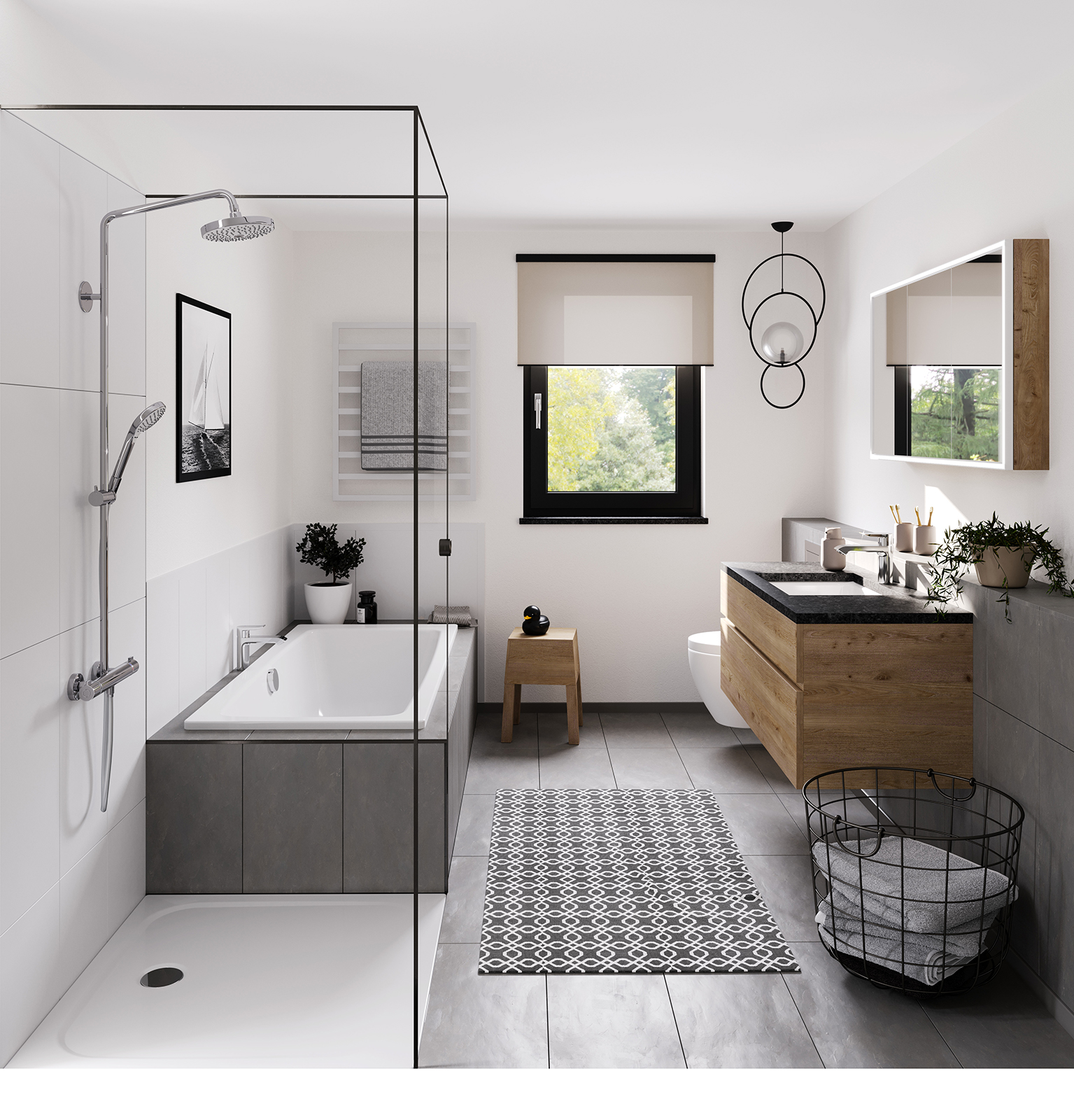
Even in a fully tanked wet room, it can be handy to include a shower screen in order to prevent spray from reaching other areas. This is especially important in a small wet room where everything is likely to be in very close proximity.
Although it is possible to design a wet room in such a way that towels or anything else you want to remain dry are positioned to avoid them becoming drenched, a screen is a great bathroom design option that can make this simple.
Here, a floor-level shower surface, the Cayonoplan from Kaldewei, has been used to create the wet area, while a sleek frameless screen prevents any sprays.
2. Create a curved cocoon in your small wet room
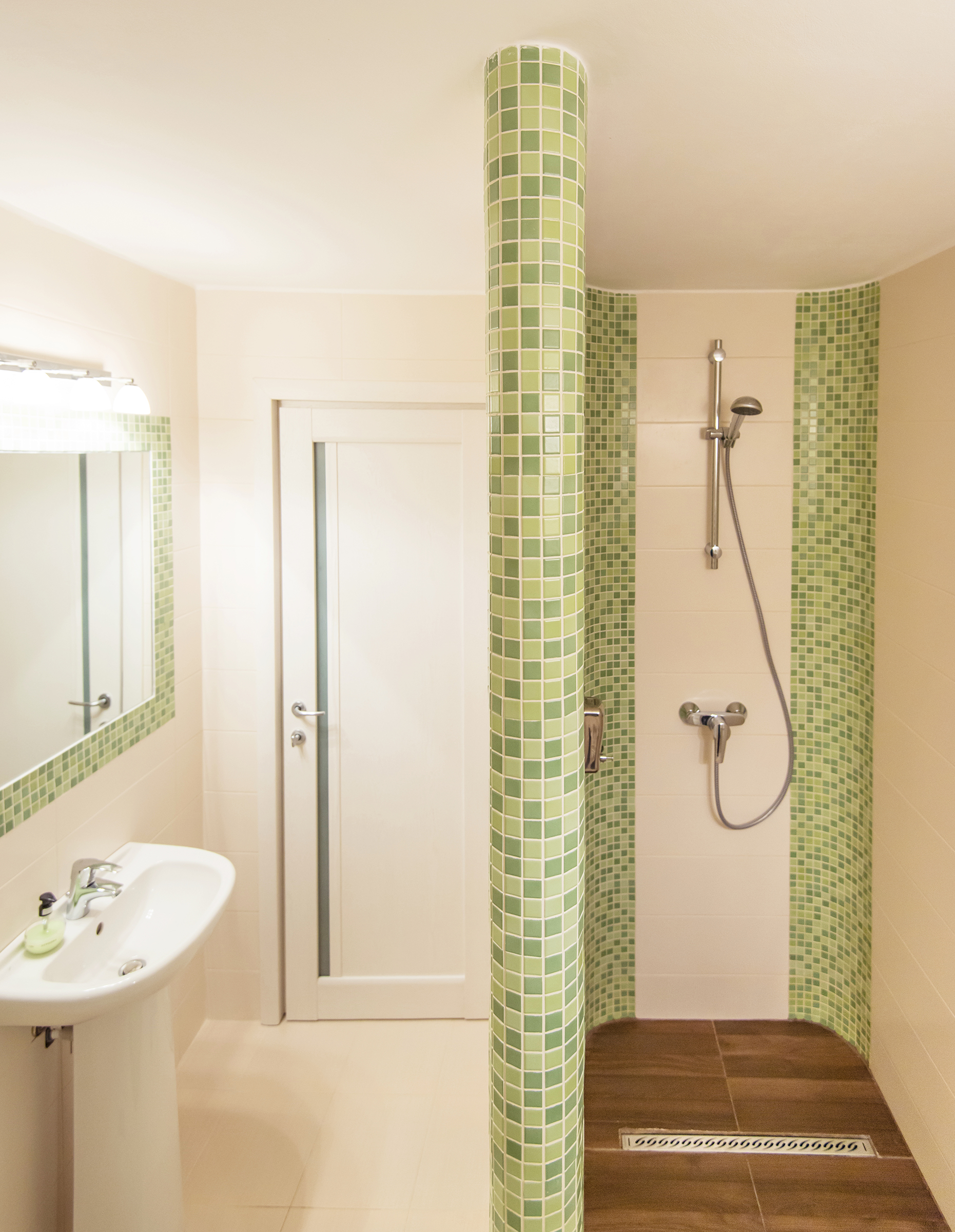
Curves can work really well in wet rooms, where they create a sense of being cosseted – something that can help you unwind during your shower.
Bring your dream home to life with expert advice, how to guides and design inspiration. Sign up for our newsletter and get two free tickets to a Homebuilding & Renovating Show near you.
In smaller spaces, curves can soften the boundaries of the space too. Here, the narrow wet room has been divided into two, with one half for the basin and entrance and the other for the wet area featuring curved walls tiled with mosaic.
If you are after bathroom wall tile ideas for small bathrooms, both mosaic and vertical strip tiles are good choices for curved surfaces.
3. Locate your wet area in a corner
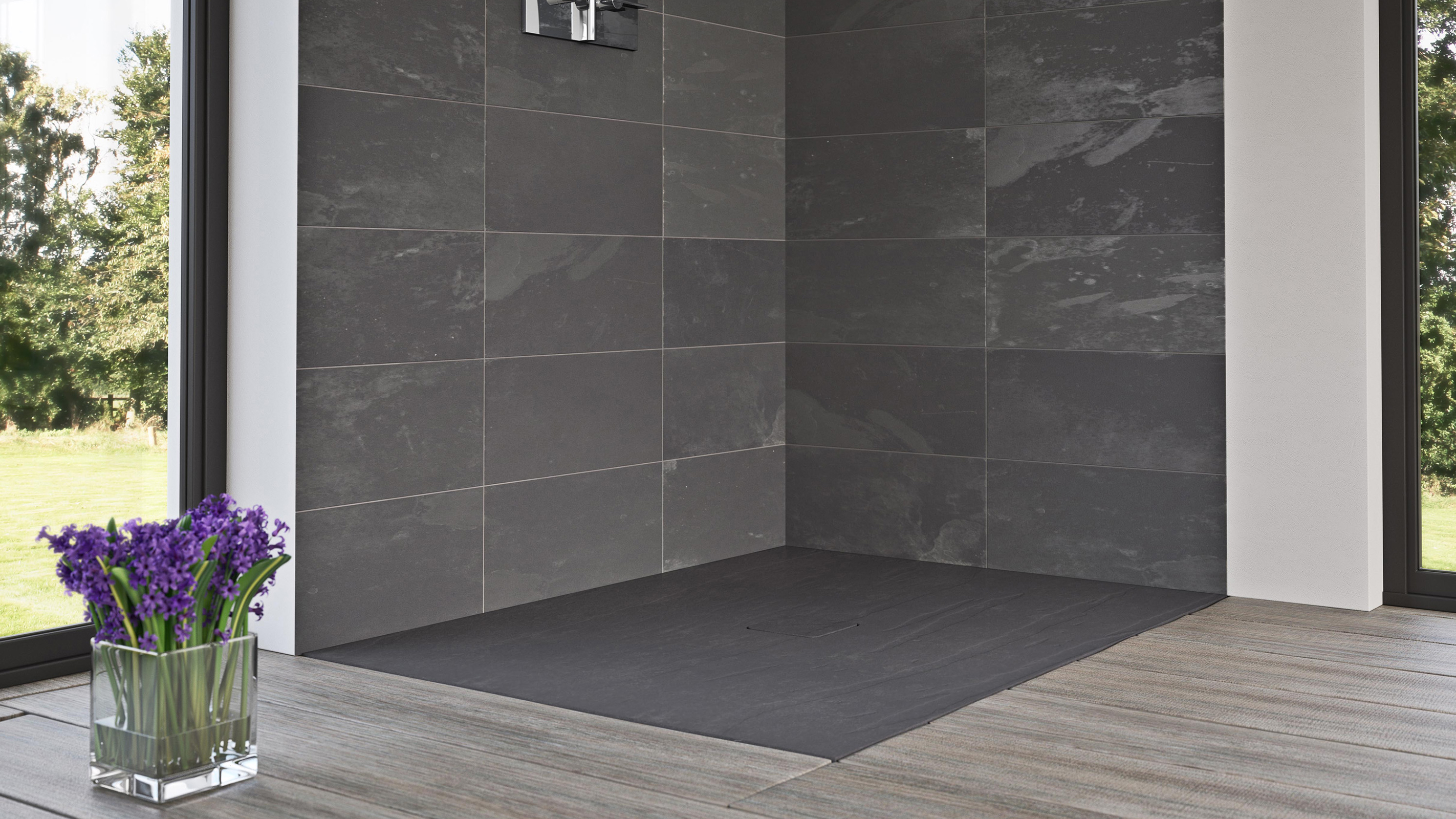
A brilliant small wet room idea is to locate the showering area in one corner of the space. Providing it is completely waterproofed on the floor and walls, and proper drainage has been put in place, water should be contained.
Walk in shower ideas such as this can help to free up space for other items of sanitaryware in the room. Here, Matki's Slate Standard and Bespoke Shower Floor has been used. It is made from cast stone resin and has a gel coating, plus it comes in a range of shapes and sizes.
"Practically, corner drainage allows us to level the entire bathroom floor in one direction. That means any water, whether it’s splash-back from the shower or water dripping off you as you step out, naturally runs towards the drain. It also allows us to waterproof the whole floor consistently, which is far more reliable than trying to isolate just one area," says Oliver and Vic Slovak, founders of VOSC Bathrooms & Interiors.

Oliver and Vic Slovak are the founders of VOSC Bathrooms & Interiors, a specialist bathroom installation company based in St Albans, working across Hertfordshire and North London. Founded in 2021, VOSC delivers multiple full bathroom installations each month, focusing on high-quality workmanship, waterproofing expertise and practical, well-executed wet room solutions.
4. Use pattern in your small wet room to distract the eye
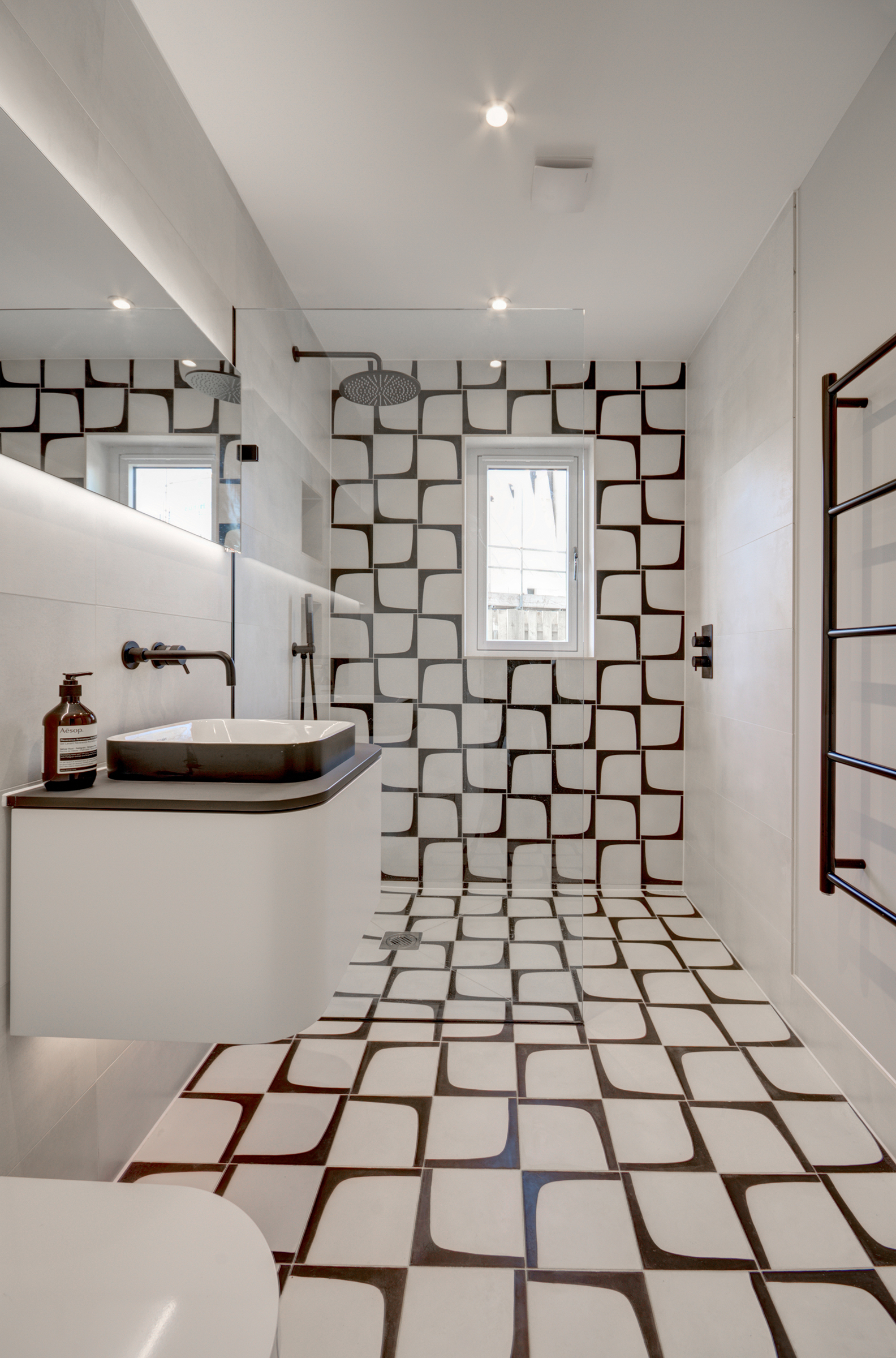
Your choice of wall tiles can have a huge impact on how large (or small) your bathroom will feel. In this long narrow wet room, a monochrome palette has been used, with the unusual, eye-catching black and white tiles doing a great job of keeping the eyes busy and distracted from the compact proportions of the space.
The long mirror along one side of the room also helps create an illusion of space; a great bathroom design idea in small bathrooms.
According to Andrea Clewett, co-founder of Showerscape, continuous vertical lines create the impression of added height and help draw the eyes upward. Not only is this a clever trick to make a small space feel larger, but it also serves as a statement-making focal point that adds interest to your room.
Shop these elongating tile picks

Made from durable porcelain, these pink striped tiles will make your small wet room pop.

Suitable for walls and floors, this black-and-white flooring will have an elongating effect.
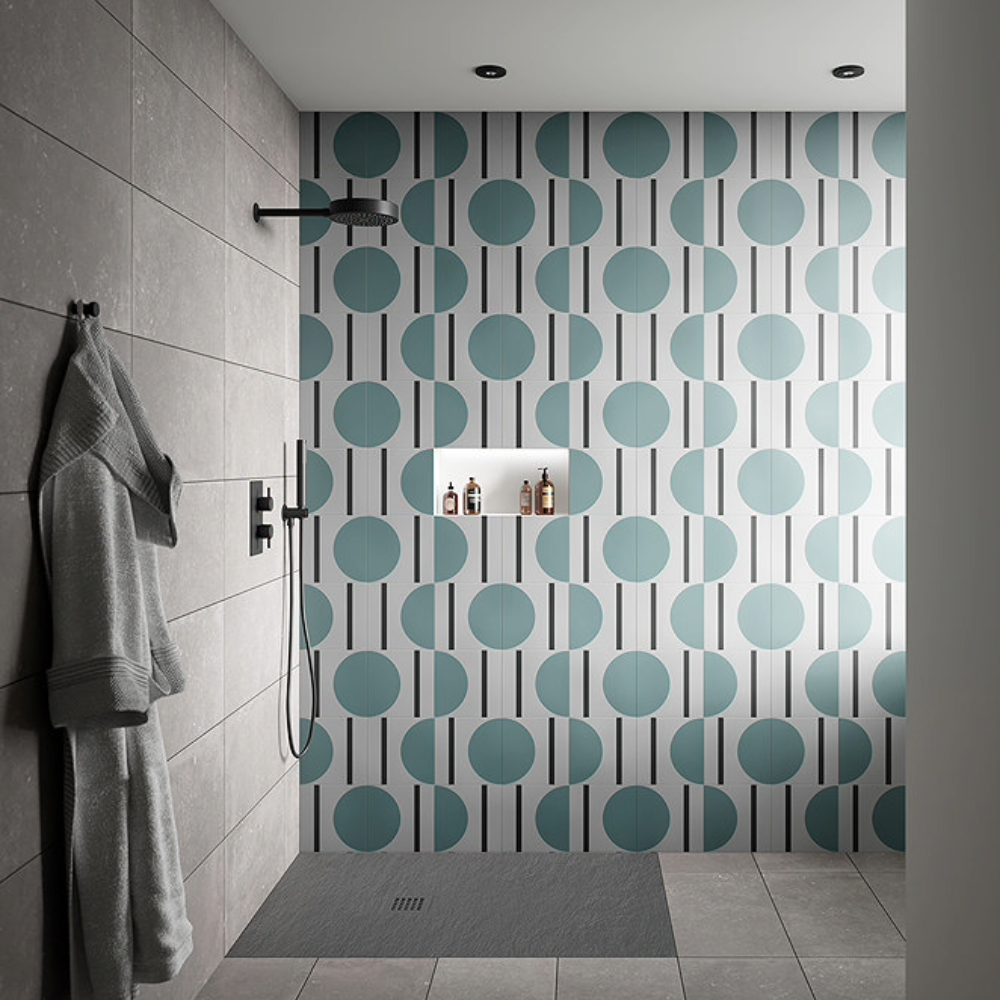
Create a beautiful feature wall with these teal geometric tiles.

Andrea Clewett is a bathrooms expert and co-founder of award-winning Showerscape, which offers bespoke floor-to-ceiling photographic panels.
5. Contain shower spray with a single screen
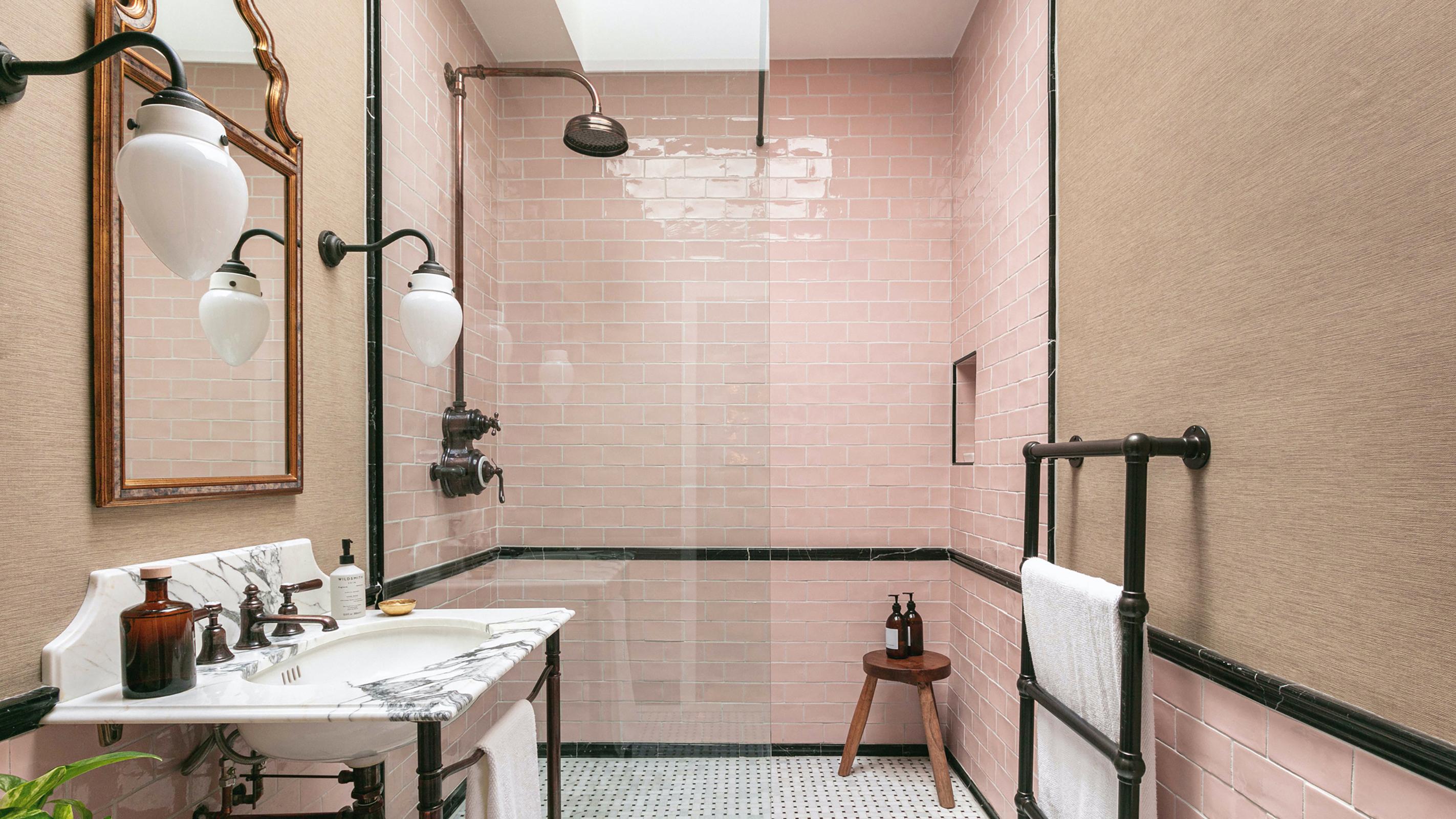
It is very much down to personal preference whether or not you decide to incorporate a shower screen into your design. Some people decide that they are happy to embrace the full wet room experience and do away with any means of shielding the rest of their sanitaryware from water spray, while others feel more comfortable with some kind of barrier.
If you fall into the latter category, a single screen is a great compromise. In this beautiful bathroom from Drummonds, the shower screen is almost invisible, meaning that the small space in no way suffers due to its inclusion.
"If a homeowner does choose a single screen, size and placement are crucial. We often see screens that are too wide, leaving very little comfortable access into the shower. For example, on a 1400mm shower tray, a 900mm fixed screen doesn’t leave enough room to walk in easily. You need to think about everyday usability, not just about how it looks," says Oliver and Vic Slovak.
6. Divide the space with a wall
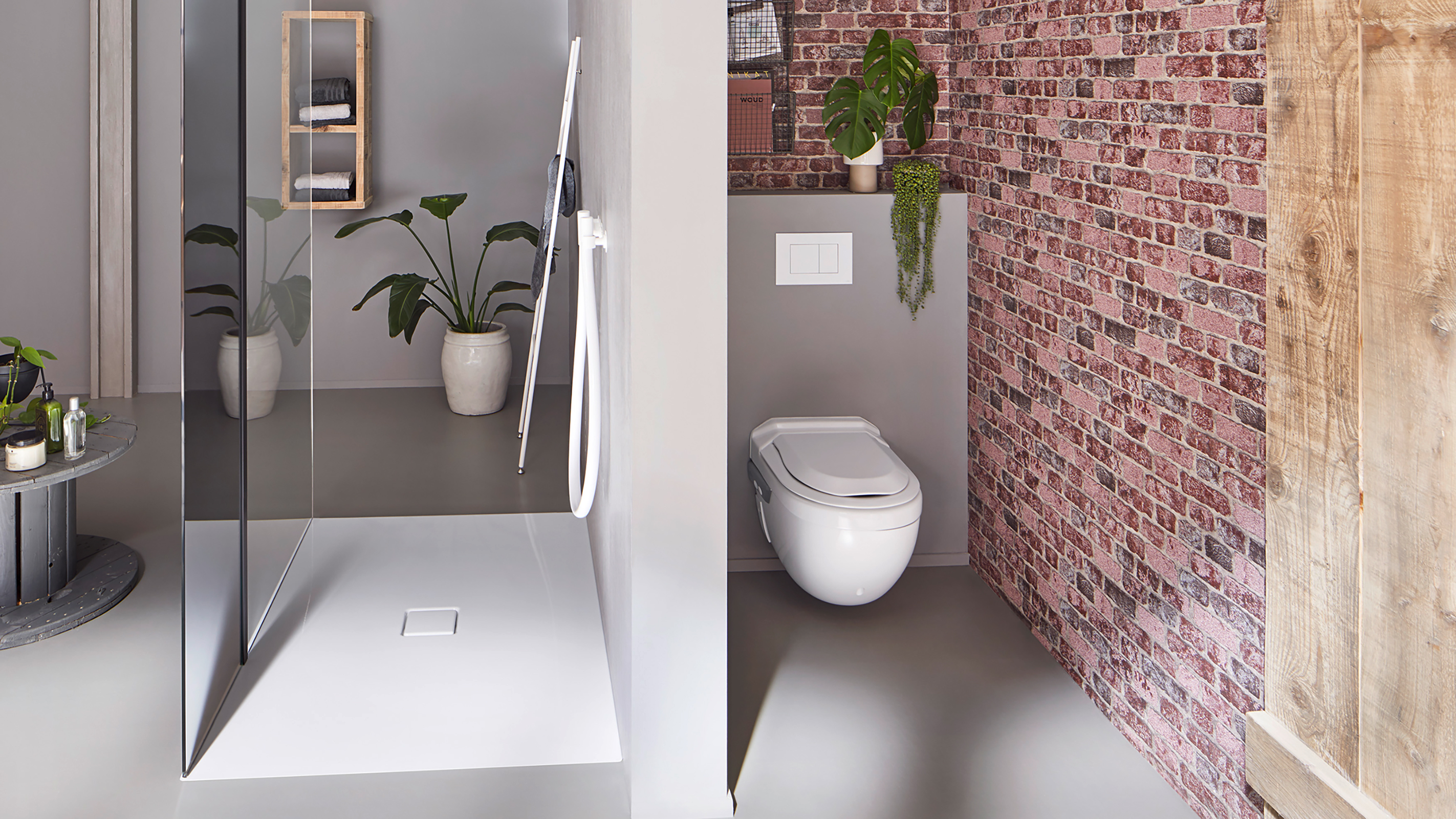
Building a partition between the wet area and the toilet is a common way to approach the layout of a wet room. It not only avoids the risk of a sodden toilet seat, but it also gives you somewhere to conceal the pipework of the shower.
When it comes to how to build a stud wall, many people feel confident enough to try their hand at it, and in a small wet room the addition of this kind of divide can really help get the most out of the room.
"Dividing a wet room can work really well, as long as the material choice allows light to pass through. One option we often recommend is glass brick walls. They create separation while still allowing natural light to flow through the space, which helps the room feel open rather than boxed in," says Oliver and Vic Slovak.
7. Step the shower up in your small wet room

Raising the showering area slightly above the rest of the space in a wet room is a great idea, but to prevent the step from becoming a trip hazard, it should be at least 10 cm high.
Raising the floor can be a way of adding depth and interest to a small space – though its worth bearing in mind that it will be less accessible for elderly or disabled homeowners. You will also need adequate ceiling height for this shower room idea to work.
Oliver and Vic Slovak says, "Stepping the shower area up does help with water containment, as it physically creates a boundary that keeps water in one place. However, in reality, it doesn’t offer any real advantage when it comes to drainage. The pipework and fall requirements are exactly the same whether the shower is stepped or level."
8. Create a sleek wet area instead of an entire room

In this luxurious master bedroom idea, a showering area has been created in the room, with a simple frameless screen dividing it from the sleeping space.
While a shower screen is certainly not a necessity in a bathroom, if you are creating a wet area as opposed to a full on wet room, it is a good idea to fit one as a way of protecting the rest of the space.
If you decide to recreate this idea at home, frameless glazing offers a sleek, modern look that keeps the space open and bright – allowing the room to stay dry without overpowering the design.
9. Use partial room dividers to break up the space
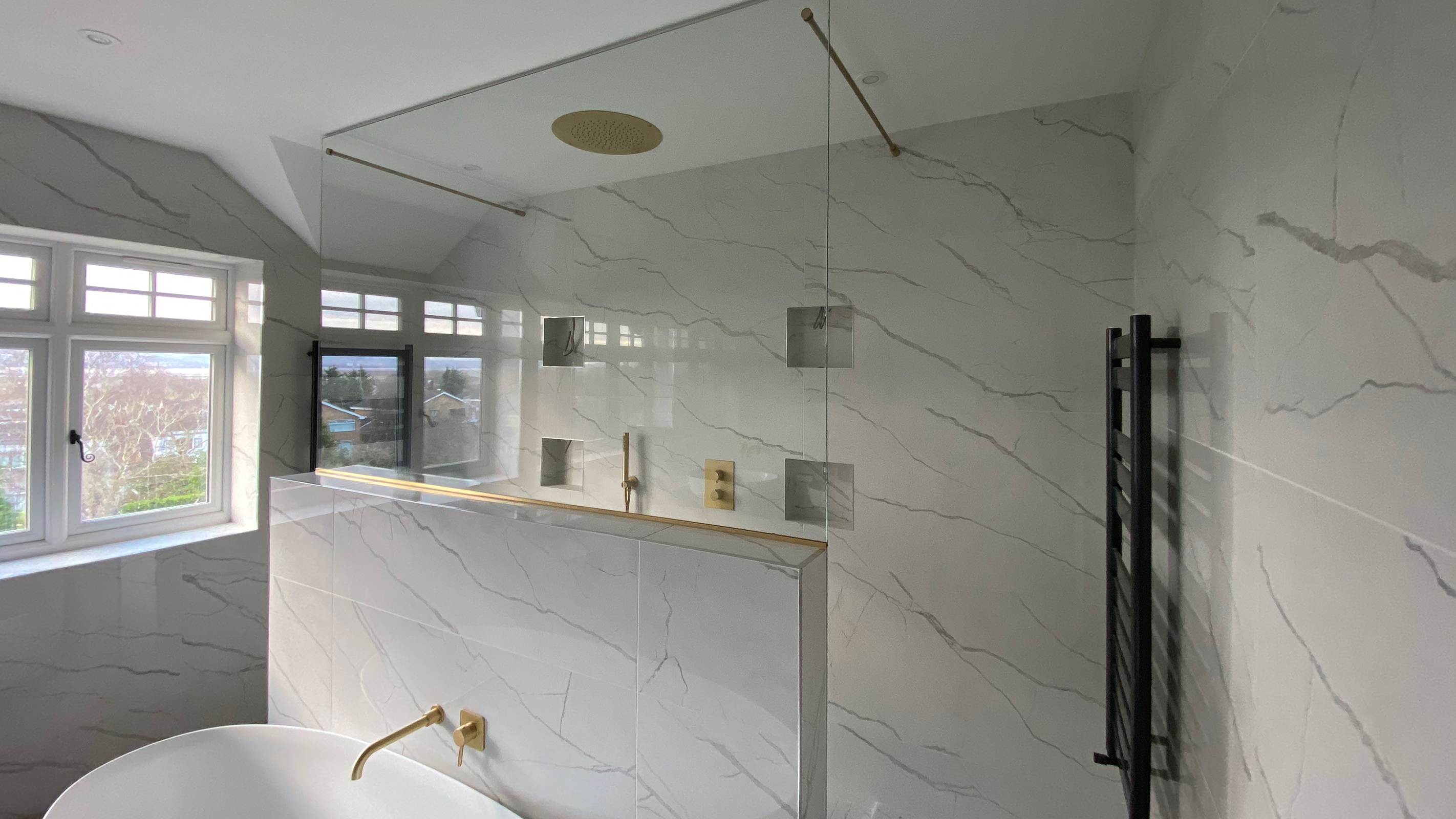
Partial walls, room dividers and screens are all brilliant solutions in small wet rooms where they break the space into zones without blocking light or taking up too much valuable floor space.
Here, using the same large format marble tiles for the floor and walls helps create a sense of space, while a half-height stud wall separates the bath from the showering area without preventing the flow of light. The overhead shower has been recessed into the ceiling to free up wall space.
The EauZone Plus Twin Entrance Wet Room Panel, designed and installed by Matki, helps the room feel airy and bright while protecting the rest of the space from becoming a splash zone.
10. Plan the layout of your small wet room carefully
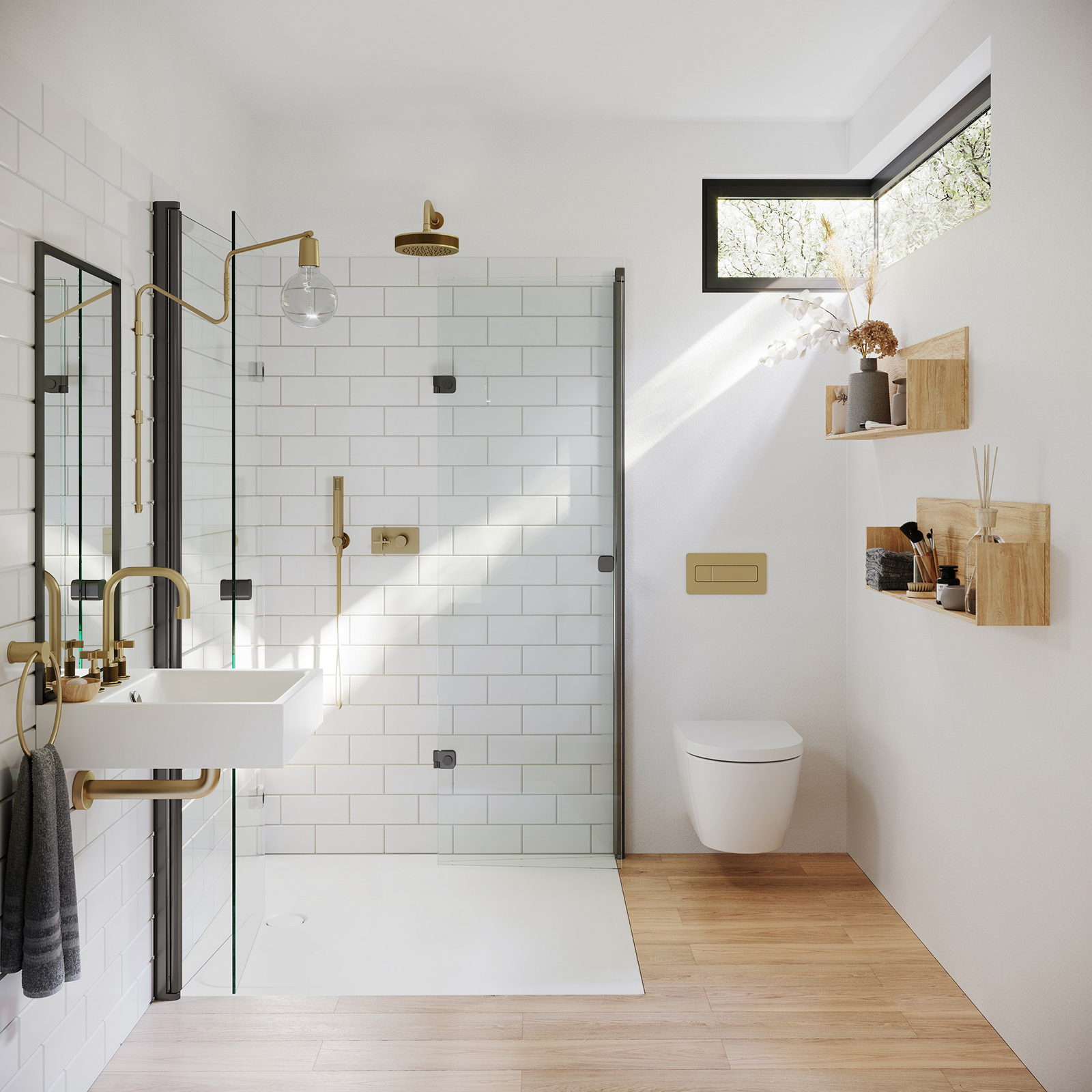
In order for any wet room to work well, the layout must be carefully considered so the space can perform as it should. In a small wet room, this becomes even more important.
You need to think through the placement of items: Where is the best place to keep your towels nice and dry after showering? Which areas are out of the path of water spray to keep your windows and mirrors clean?
Here, the NEXSYS floor-level shower surface from Kaldewei has been used to form the wet area – it comes as a pre-assembled 4-in-1 system consisting of enamelled shower surface, waste channel, all-round sealing tape and slope support with counter slope between channel and wall.
11. Opt for a neutral plaster finish in your small wet room

Tiles are not the only option for wet rooms and, in small spaces, opting for a neutral, pale surface all over can help to make the space feel bigger and brighter.
Polished plaster, tadelakt and, more recently, microcement, have all been on the rise as alternative surfaces to tiles. All add a modern yet characterful finish to walls and are highly practical too being waterproof and easy to clean.
This wet room might be small, but it feels airy and fresh thanks to the plaster walls and a pale floor, Patina Oak Grey from Quick-Step's Capture Collection.
12. Use skylights to bring in natural light

When it comes to making your small wet room feel as big as possible, careful lighting choices can make all the difference. In the photo above, the beautiful skylight puts a natural spotlight on the shower area, complementing the curved wall and highlighting the tilework.
Not only do rooflights look incredible, but they can also help you cut back on your energy bills, as you won't need to turn on your lights during the day. You also won't have the privacy concerns that come with a standard wall window.
So long as they don't project more than 15 cm from the roof slope, you can install a skylight under your Permitted Development in many cases. However, it's always a good idea to check with your local authority first – particularly if you live in a conservation area.
Although the term 'wet room' technically describes a room that has been fully tanked – or waterproofed – many people decide to tailor the design of their wet room to suit their needs. They may a screen or wall to prevent water seeping along the floor or use a sunken shower tray instead of building a wooden deck beneath a tiled floor.
The ideas presented here offer a range of ways to approach the design of your wet room and are particularly suitable for those after small bathroom ideas. If you're keen to get going with your project, read our guide on how to install a wet room.
Natasha was Homebuilding & Renovating’s Associate Content Editor and was a member of the Homebuilding team for over two decades. In her role on Homebuilding & Renovating she imparted her knowledge on a wide range of renovation topics, from window condensation to renovating bathrooms, to removing walls and adding an extension. She continues to write for Homebuilding on these topics, and more. An experienced journalist and renovation expert, she also writes for a number of other homes titles, including Homes & Gardens and Ideal Homes. Over the years Natasha has renovated and carried out a side extension to a Victorian terrace. She is currently living in the rural Edwardian cottage she renovated and extended on a largely DIY basis, living on site for the duration of the project.
- Megan MilsteadContent Editor

